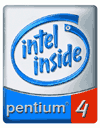Nu de Pentium 4 Northwood geschikt is voor zo'n beetje elk denkbaar type geheugen (je kan er nog net geen EDO bij doen ![]() ) is het makkelijk te verdwalen in het grote bos van aangeboden chipsets. De ene chipset/geheugen-combinatie is een stuk goedkoper dan de andere, maar hoeveel verschillen ze als het om de prestatie van het systeem gaat? Bij GamePC stelden ze dezelfde vraag, en om je bij het kiezen tussen de verschillende mogelijkheden te helpen, maakten ze een uitgebreid overzicht van de volgende chipsets met bijbehorende geheugensoorten:
) is het makkelijk te verdwalen in het grote bos van aangeboden chipsets. De ene chipset/geheugen-combinatie is een stuk goedkoper dan de andere, maar hoeveel verschillen ze als het om de prestatie van het systeem gaat? Bij GamePC stelden ze dezelfde vraag, en om je bij het kiezen tussen de verschillende mogelijkheden te helpen, maakten ze een uitgebreid overzicht van de volgende chipsets met bijbehorende geheugensoorten:
|
Bovenstaande combinaties worden op zeer uiteenlopende benchmarks getest, maar niet voordat er een uitgebreide voorbeschouwing is gegeven over de achtergrond en kenmerken van de verschillende chipsets, en hoe deze zich los van de praktijkervaring tot elkaar verhouden. De Intel-chipsets staan erom bekend erg stabiel te zijn, maar ook erg prijzig, waar bijvoorbeeld de stabiliteit van de goedkopere SiS-chipset zeker niet onvermeld mag blijven. In verband met de honger naar geheugenbandbreedte van de Northwood zal duidelijk zijn dat het inzetten van DDR SDRAM in plaats van SDRAM nogal uitmaakt voor de systeemprestatie, maar het gebruik van die eerste is vooralsnog wel aan beperkingen gebonden:
Signal Integrity - Lately we've been seeing an interesting trend in Pentium 4 motherboards and DDR memory, in terms of signal integrity. Every Pentium 4 DDR motherboard we used in this comparison had some kind of DDR "limitation", which if not followed properly would cause system issues.
[break] Met deze feiten in het achterhoofd is het hoog tijd om eens de keiharde cijfers te bekijken. De chipsets worden onder andere getest onder SiSoft Sandra, 3dMark 2001, Photoshop en verschillende speldemo's. Bovendien kijkt men hoe groot de verschillen zijn als het gaat om het encoderen van audio en video. De resultaten van al deze tests zijn niet erg opzienbarend. Bijna overal laat de i850/RDRAM-combo zien dat deze nog steeds aan kop staat, en nog een tikje sneller is dan DDR-RAM, ook al al gaat het vaak om slechts enkele procenten. De i845-chipset met SDRAM draagt in elke test met overtuiging de rode lantaarn, en moet duidelijk ontweken worden als men niet al te erg op de centen zit. De conclusie van GamePC: [/break]
- Intel 845-D - 4 Bank Limit. Loading a motherboard with more than two double-sided DDR modules will cause the system not to boot. Clearly documented in manuals, but again, this does limit your expandability.
- SiS 645 - All three banks can be fully used, but only at DDR-266 speeds. If you try to run all three banks at the SiS 645's rated DDR-333 speeds, you can easily run into stability issues. Even though this CAN be done (we've tried), Asus and SiS highly recommend against it.
- VIA P4X266 - More bank limitations. Our particular P4X266 motherboard has 4 DDR DIMM slots, but three can be used at PC-2100 speeds. If you use all four DIMMS, the motherboard will clock down to PC-1600 speeds. Does this sound familiar?
Performance wise, Intel's 850 is still the leader in the majority of our benchmarks. Gaming, video encoding, content creation, its tops in them all. The lead has certainly gotten smaller and smaller with the introduction of the latest generations of P4 DDR motherboards, but the lead is still there. The i850 is a year older, but it is still without a doubt the best performing P4 platform out there.
The SiS 645 can't be denied though. Coming in with an incredibly low price tag, and new DDR-333 memory support, the 645 provides an absolutely exceptional bank for the buck ratio. The 645 with DDR-333 runs at about 95% of the speed of the i850 / RDRAM platform, but only costs around 75% as much. Stability and incompatibility issues? None that we've seen. It's just a great little chipset for not a whole lot of money.
[..] As for the VIA P4X266 and Intel 845 with SDRAM? Well, if you don't have anything nice to say... *ahem*. Let's just say; if you're looking for a good performing, stable Pentium 4 platform, try and avoid these two chipsets. There are simply much better alternatives out there.
Met dank aan wolfmaniak voor de link!


:strip_exif()/i/1009829595.jpg?f=thumbmedium)
:strip_exif()/i/1000145888.jpg?f=thumbmedium)
/i/991448252.png?f=thumbmedium)
:strip_exif()/i/1000148685.jpg?f=thumbmedium)
:strip_exif()/i/1003395607.jpg?f=thumbmedium)
:strip_exif()/i/1045590255.jpg?f=thumbmedium)
:fill(white):strip_exif()/i/2000850628.jpeg?f=thumbmedium)